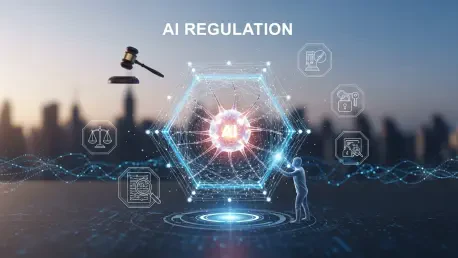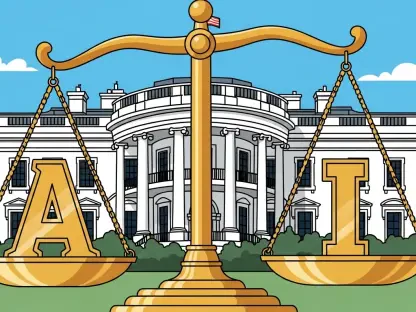Understanding the Landscape of AI Regulation in the EU
The rapid ascent of artificial intelligence across industries has placed the European Union at a critical juncture, with member states racing to balance innovation with ethical oversight while AI reshapes sectors from healthcare to finance. As a result, the EU has emerged as a global leader in setting regulatory standards, yet the absence of cohesive national frameworks has left gaps in implementation. This dynamic sets the stage for Italy’s groundbreaking move to enact Law No. 132/2025, marking it as the first EU nation to establish a comprehensive national AI framework, a step that could redefine how AI governance evolves across the bloc.
At present, the EU operates under a patchwork of regulations, with the EU AI Act (Regulation (EU) 2024/1689) serving as the cornerstone for harmonized rules. This act categorizes AI systems by risk levels, imposing stricter requirements on high-risk applications while aligning with broader policies like the General Data Protection Regulation (GDPR) and the Digital Services Act (DSA). Key market players, including tech giants and startups, navigate a complex web of compliance, while advancements in generative AI and machine learning continue to outpace regulatory updates, underscoring the urgency for localized frameworks.
Italy’s legislation arrives amid this evolving landscape, covering a broad spectrum of AI technologies, from chatbots to deepfake tools, and addressing societal impacts that EU-wide rules have yet to fully tackle. While the EU AI Act provides a baseline, Italy’s law signals a push for tailored national responses, raising questions about how such initiatives might complement or challenge the bloc’s unified approach. This development positions Italy as a test case for balancing innovation with accountability in a highly interconnected regulatory environment.
Italy’s AI Law: Core Provisions and Trends
Key Themes and Innovations in the Legislation
Italy’s AI Law introduces a forward-thinking approach by targeting pressing societal concerns tied to AI deployment. Central to the legislation are measures for protecting minors, requiring parental consent for children under 14 to access AI systems or have their data processed. Additionally, the law criminalizes the spread of harmful deepfakes, imposing penalties for content that misleads and causes unjust damage, reflecting a proactive stance on digital misinformation.
Beyond these safeguards, the law emphasizes transparency in professional AI use, mandating that practitioners disclose AI involvement to clients in clear terms. It also tackles copyright issues by reinforcing human authorship and extending text and data mining exceptions to AI systems, striking a balance between protecting creators and enabling technological progress. These provisions highlight Italy’s commitment to ethical AI, prioritizing human-centric principles over unchecked automation.
Emerging trends within the legislation point to a broader vision of accountability and innovation. By embedding rules that preserve human decision-making in judicial and administrative contexts, the law ensures AI remains a supportive tool rather than a replacement for human judgment. This focus on ethical deployment, coupled with efforts to foster research through data use in controlled environments, suggests Italy is laying groundwork for a model that other nations might adapt to their unique contexts.
Alignment with EU Frameworks and Limitations
A defining feature of Italy’s AI Law is its strict alignment with the EU AI Act, ensuring that national rules do not exceed or contradict the broader European framework. Provisions explicitly mandate consistency, a requirement shaped by the European Commission’s oversight through the TRIS Notification process, which curbed early ambitions for a more independent domestic policy. This harmonization aims to prevent regulatory fragmentation across the EU, maintaining a unified market for AI technologies.
However, this alignment comes with limitations that could impact the law’s effectiveness. The deferral of detailed rulemaking to implementing decrees, expected by October 2026, introduces uncertainty for stakeholders seeking immediate clarity on compliance. Furthermore, EU oversight restricts Italy’s ability to innovate beyond prescribed boundaries, potentially limiting the law’s capacity to address local nuances or emerging challenges not yet covered by the EU AI Act.
These constraints raise practical concerns about enforcement and adaptability. Without finalized secondary legislation, businesses and regulators face ambiguity in interpreting key provisions, while the risk of redundancy with EU rules looms large. The coming years, particularly the period leading to the 2026 deadline, will be crucial in determining whether Italy’s framework can carve out a distinct role within the EU’s regulatory ecosystem.
Challenges in Implementing Italy’s AI Law
Implementing Italy’s AI Law presents a series of practical hurdles that could undermine its ambitious goals. One primary obstacle lies in the uncertainty surrounding the implementing decrees due by October 2026. Without these detailed guidelines, critical aspects such as data handling, algorithmic transparency, and enforcement mechanisms remain vague, leaving businesses and public authorities in a state of limbo as they attempt to align with both national and EU expectations.
Another challenge stems from potential overlaps in authority among regulatory bodies tasked with oversight. Agencies like the Agency for Digital Italy (AgID), the National Cybersecurity Agency (ACN), and the Italian Data Protection Authority each hold distinct yet intersecting roles, raising the risk of jurisdictional confusion. This fragmented governance structure could lead to inefficiencies or inconsistent application of the law, particularly in sectors with overlapping interests like finance and technology.
For businesses, navigating compliance poses a significant burden, especially for smaller firms lacking resources to interpret evolving rules. The dual pressure of adhering to Italy’s framework while anticipating EU-level updates risks creating a complex, redundant regulatory environment. Addressing these challenges will require strategic coordination among agencies and clear communication to stakeholders, ensuring that enforcement efforts streamline rather than complicate the path to compliance.
Regulatory Impacts and Governance Structures
Italy’s AI Law establishes a governance model that leverages existing authorities to oversee AI deployment, avoiding the creation of new bureaucratic entities. The Agency for Digital Italy serves as the notifying authority, while the National Cybersecurity Agency acts as the market surveillance body and liaison with EU counterparts. Sector-specific regulators, such as the Bank of Italy for financial applications, retain oversight in their domains, ensuring specialized expertise guides implementation.
This multi-agency approach has significant implications for industry practices, particularly in terms of compliance and transparency. Businesses must now contend with explicit requirements to disclose AI use in professional settings and adhere to data protection standards that align with GDPR principles. While this fosters accountability, it also demands robust internal processes to meet reporting obligations, potentially increasing operational costs for firms unaccustomed to such scrutiny.
Balancing national ambitions with EU harmonization remains a core tension within this governance structure. Although Italy’s framework aims to lead by example, its impact on industry will depend on how effectively authorities coordinate their efforts and adapt to evolving EU directives. The success of this model hinges on creating a seamless regulatory experience that supports innovation while upholding the ethical standards embedded in both national and European policies.
Future Implications for AI Regulation in the EU
Italy’s AI Law could serve as a blueprint for other EU member states seeking to develop national frameworks within the constraints of the EU AI Act. By addressing specific issues like deepfake misuse and minor protection, Italy highlights areas where localized regulation can complement broader EU priorities, potentially inspiring similar initiatives in countries facing comparable challenges. This pioneering effort might encourage a wave of tailored policies that enrich the bloc’s regulatory tapestry.
However, the law also exposes potential friction between national and EU-level governance. If other member states follow suit with divergent approaches, the risk of regulatory fragmentation could undermine the EU’s goal of a unified digital market. Italy’s experience, particularly the outcomes of its implementing decrees over the next year or two, will offer valuable lessons on navigating this balance, shaping discussions on how much flexibility member states should have in AI policy.
Looking ahead, emerging technologies and global economic trends will further test Italy’s framework and its influence on the EU. As AI capabilities expand into uncharted areas, the law’s adaptability—through secondary legislation and international collaboration—will be critical. Italy’s proactive stance may position it as a leader in setting ethical and practical standards, provided it can resolve internal uncertainties and align with the bloc’s long-term vision for AI governance.
Conclusion and Outlook for AI in the EU
Reflecting on Italy’s bold step into AI regulation, the journey reveals a nuanced interplay between national initiative and European unity. The law carves out a pioneering path, addressing critical societal risks while adhering to the EU’s harmonized framework, yet it stumbles on uncertainties tied to delayed decrees and governance overlaps. These challenges underscore the complexity of regulating a technology as transformative as AI in a multi-layered policy environment.
Moving forward, stakeholders should prioritize actionable strategies to bridge these gaps. Governments and agencies must expedite clear, coordinated secondary legislation to eliminate ambiguity, while businesses need to invest in compliance infrastructure to adapt swiftly to evolving rules. Collaborative platforms between member states could further harmonize national efforts, ensuring that Italy’s model sparks progress rather than discord across the EU.
Ultimately, the next steps lie in fostering dialogue among regulators, industry leaders, and technologists to anticipate future AI developments. By building on Italy’s groundwork, the EU has the opportunity to refine a regulatory approach that not only safeguards ethical principles but also propels innovation on a global stage, setting a precedent for responsible AI governance in an increasingly digital world.









